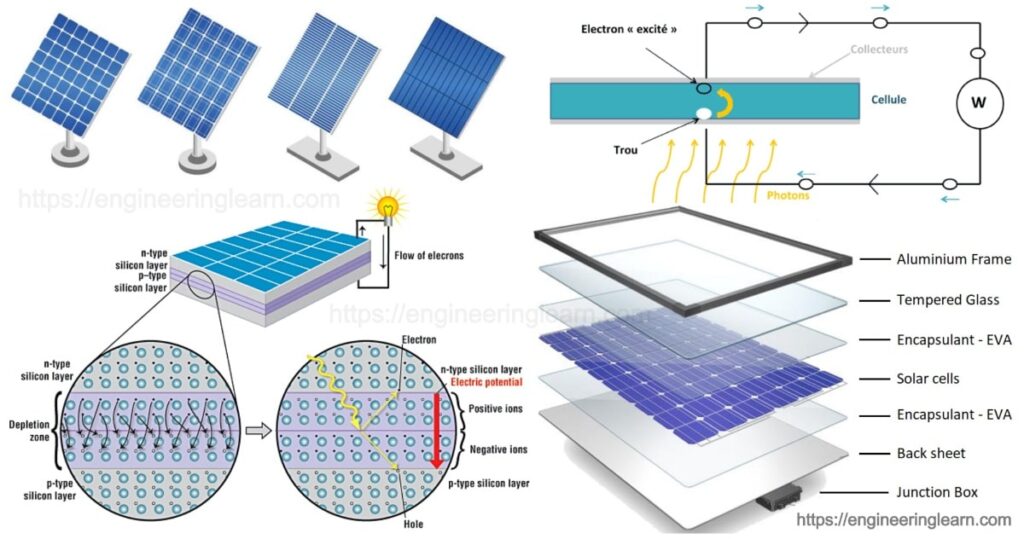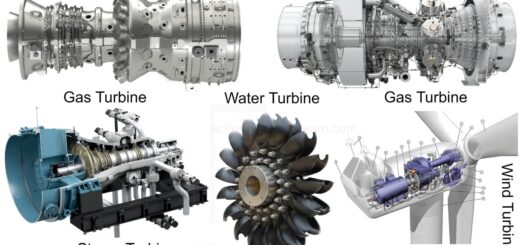Types of Solar Panels

Solar Panels Types and Working Process :- There are three types of solar panels known to mankind. These are named as monocrystalline, polycrystalline, and thin-film. Every type has its own functions, advantages, disadvantages and the best suited solar panel which one should get installed depending upon the specific factors of your own property.
Advantages of Different Solar Panels
Monocrystalline: These solar panels are highly efficient and are used at places where there is a requirement of high performance.
Polycrystalline: These solar panels are highly cost effective.
Thin-Film: These solar panels are portable and flexible and comparatively light weighted.
Disadvantages of Different Solar Panels
Monocrystalline: As these panels are highly efficient, these are also quite expensive.
Polycrystalline: These solar panels are not comparatively less efficient as compared to monocrystalline.
Thin-Film: These solar panels have the lowest efficiency as compared to the other panels.
How does Solar Panel generate Electricity?
The solar panel consists of a layer which is made by the combination of silicon cells, metal frame, glass casing, and wiring that allows the flow of current from silicon cells. The material silicon is a non-metal which carries conductive properties that allow to absorb sunlight and convert it into electricity. Once the light interacts with a silicon cell, all the electrons present are set to motion, which immediately initiates the flow of electric current. This process is known as the photovoltaic effect, which describes the functionality and technology of the solar panel.
The Photovoltaic effect
The photovoltaic effect is the procedure of generating electricity with the help of solar panels. The process was first discovered in the year 1839 by Edmond Becquerel and was explained as a characteristic of certain semiconductors which allow them to generate the electric current which when exposed to the sunlight.
The process works through following these easy steps:
- The silicon solar cell absorbs the solar radiations.
- Once the sun rays are absorbed by the silicon cell, the electrons begin to move, creating the good flow of the electric current.
- The wires captures electricity in the form of direct current (DC) and feeds it to the solar inverter which needs to be converted to the alternating current (AC) electricity.
How does grid connection work with solar panels?
Generating electricity with the help of solar panels may be found fruitful by various people, but at the same time there are people with a general confusion about how the grid factors into the solar process of a house.
Any house which is connected to an electrical grid will have a utility meter which would be used by the energy providers to measure the units of power supplied to your home. Once you install the solar panels onto your roofs or on the ground of your property, they are eventually connected to the utility meter. The amount of units produced by the solar system can be accessed and measured by this device.
In the United States most house owners have the access to net metering which is a major solar incentive that aims at significantly improving the financials of the solar. The benefit of having net metering is that you can send power to the grid when your solar system is producing more in exchange for credits on your electricity bill.
For example production of electric units in the day time of sunny summer months or at the time when there is low electricity consumption, you can use your credits to develop extra energy and meet out your regular electricity demand. In a lay man’s language we can say that net metering offers a free storage to the property owners who aim to make solar an all-in-one energy solution.
How House Owners Guarantee Major Solar Savings?
Before owning a solar panel array for your home, one must consider various factors like your budget, equipment, installer selection, warranties etc. In addition to this arises the question about how to get a good deal with generating strong energy savings in the long run. For the people who are new to the solar shopping process, here are some tips to advise them which will help them in buying the best solar module system without being deceived.
Researches and Considerations before Installation
Shopping a solar panel and installing it takes a lot of research and consideration, including a thorough review of the company and its services in your area. According to a recent report from National Renewable Energy Laboratory, United States (NREL) it is recommended that consumers must compare as many solar options as possible to avoid paying higher prices offered by the huge installers in the solar industry.
Find Small Dealers, Who Offer Better
The bigger isn’t always the best, as the bigger dealer would give you a higher price for the installation which is the main reason we strongly encourage the owners to consider all of their solar options. A recent report by the U.S. government says that large installers are very expensive as compared to small solar companies and also there is a wide variation in the type of service of both of them. If you have any attractive offer from some of the big installers in solar, make sure you compare those quotes from local installers to ensure you don’t overpay for the same solar. Also keep in mind that the small installer would always try to give a better service in order to increase the business, so it is suggested to buy wisely.
Comparing the equipment options is most important
It is suggested to compare from a diverse array of solar panels which will help you in comparing the costs based on various equipment and offers available to you. There are various factors to be considered while searching for the best solar panels in the market. There would be panels with higher efficiency ratings as compared to others, but investing in a highly efficient solar equipment doesn’t always result in higher savings. The best way to find the perfect spot for your property is to evaluate quotes with varying equipment.













